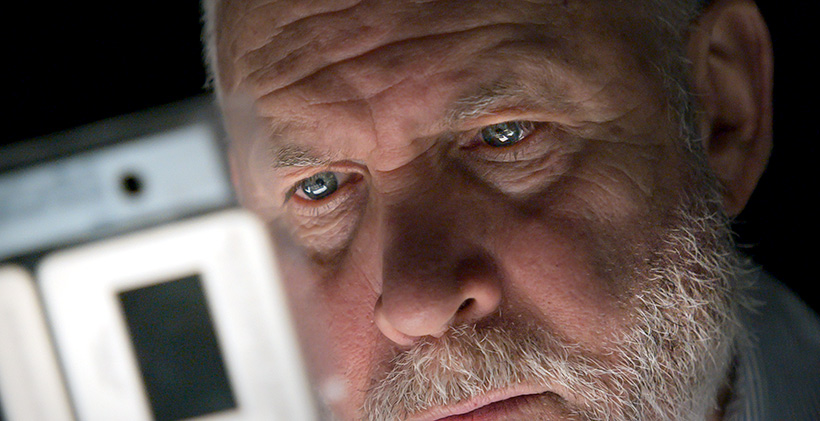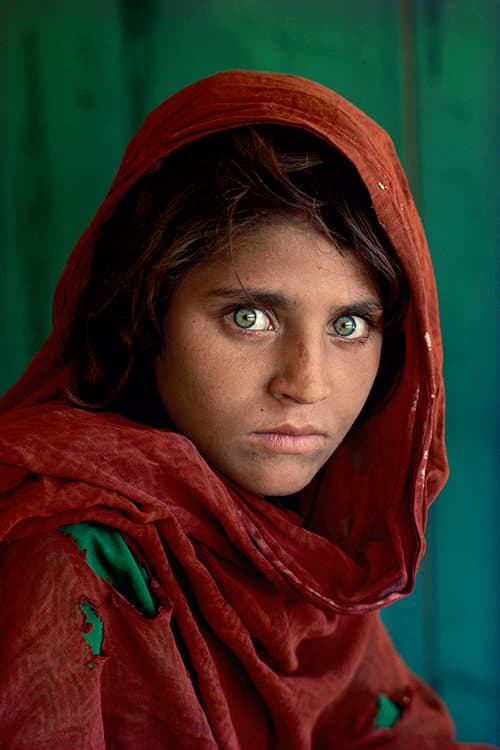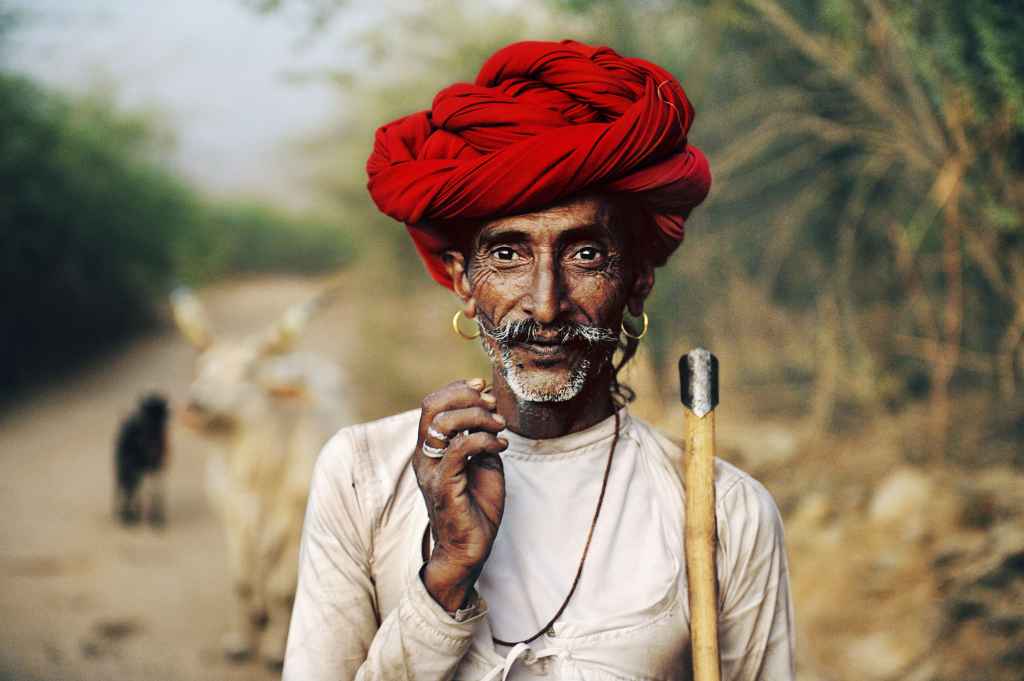Steve McCurry is one of the star speakers at the Xposure festival in UAE. He caught up with deputy editor Geoff Harris for a wide-ranging and frank interview
One of the biggest draws at the Xposure photography festival currently taking place in Sharjah, UAE, is Steve McCurry, the world-famous travel and documentary photographer forever associated with Afghan Girl – now celebrated as one of the most iconic and recognisable images of the 20th century.

A shot of Steve from his recent documentary, The Pursuit of Colour. Credit: Dogwoof.
Steve was born in Philadelphia in 1950 and studied cinematography at university before changing his degree to theatre arts. Like many of his generation, he was drawn to photography after seeing images in Time magazine.
“When I was about 12, I saw images of the monsoon in India in Time, published by Brian Brake a photographer from New Zealand. They were just inspiring and intriguing and magical. I wanted to see India for myself, so that is what I eventually did.’
Steve worked in India as a freelance photographer, having already served his apprenticeship as a local newspaper photographer. The first paper he worked on was Today’s Post, published in the oddly named town of King of Prussia, Pennsylvania.
While freelancing in India, Steve met two Afghans who told him more about the bloody war unfolding in their home country following the Soviet invasion.
Intrigued, Steve donned Afghan garb and headed over the border, winning the trust of the local Mujahideen resistance and taking some unforgettable images. He he had to sow the undeveloped film into his clothing to get it back over the border to India.
These images established Steve’s reputation, being published by the New York Times and Paris Match. He also won a Robert Capa Gold Medal for the Best Photographic Reporting from Abroad.
‘Afghanistan was the most dangerous place I’ve ever been to and I’ve been in some scary situations.’ Steve recalls. ‘I was in a plane crash in Slovenia, and spent time in Beirut and Cambodia during their civil wars, but Afghanistan was the worst. There was so much heavy fighting and it was so chaotic and disorganised, I never knew where I was supposed to be or when.’
Steve cites his early influences as Henri Cartier Bresson, Elliott Erwitt, Dorothea Lange, Andre Kertesz, Ernst Haas, Eugene Smith and later, Don McCullin.
You don’t need a PhD in the history of photography to see how many of these giants of documentary photographer would go on to influence Steve’s powerful portrait style, characterised by direct eye contact and the skilful use of natural light.

Afghan Girl © Steve McCurry / Magnum Photos
This is exemplified in the image of Sharbat Gula, aka Afghan Girl, taken in a refugee camp near Peshawar, Pakistan, in 1984. ‘I’ve always tried to capture the emotion in the eyes of my subjects, often with a direct gaze,’ he says. ‘Everyone sees portraiture differently but that was what I decided to – capture emotion through the eyes.’
After being deported back to Afghanistan in 2017 following legal difficulties, Sharbat Gula was granted asylum in Italy in 2021, three months after the Taliban took over her troubled home country. ‘She evaluated the situation and decided it was the best thing for her, so we helped her as much as we could,’ Steve adds.
In a previous interview for AP, he talked further about this immortal image. ‘This is a young girl who has spent most of her life in the back of a truck. You can’t really be normal if you live this wretched existence. This little Afghan girl comes from a brutal country, yet here’s a little bit of beauty in all this devastation’
After many years of trying to find out what happened to the girl, McCurry eventually located her safe and well in 2002 – an experience he described as one of the most memorable of his eventful life.
Did he ever worry about being typecast as the Afghan girl photographer, considering he has worked – and continues to work – in many countries? ‘No, I don’t worry about any of that stuff,’ he shrugs. ‘You shoot and enjoy your life and try to be creative, telling your story and looking at the world in a way that is meaningful to you.’

For McCurry, the eyes always have it. Mumbai, India, 1993. © Steve McCurry / Magnum Photos
As well as the Afghan Girl, Steve is also synonymous with Kodachrome film, which gave the gorgeous colours and tones many photographers still try to emulate digitally today (Steve shot the last roll of Kodachrome made by Kodak, and an interesting documentary was made about this).

Steve’s mastery of colour and breathtaking skill as a travel portrait photographer is captured in this image of a herdsman, taken in India in 2008. © Steve McCurry / Magnum Photos
But he has no nostalgia for film, or little interest in the current analogue revival – anyone hoping he will become the figurehead for a Kodachrome revival will be disappointed.
‘Listen, my feeling is that whether it’s black and white or colour, or digital or film, a plastic camera, 8 x 10, pinhole 35mm, etc it doesn’t matter!
Do whatever works best for you as a photographer. If you want to shoot with film, great, but for me I like digital for a lot of reasons, including its convenience – I have absolutely no nostalgia for film. It’s not like film makes you anything special.’
Steve’s current camera is a Leica SL-2 and he mainly uses a 24-90mm f/2.8 4 lens, along with the 15-35mm f/3.5-f/4.5 and and 90-280 mm f/2.8-f.4. ‘It’s the best camera I’ve ever used,’ he explains. He also admits to having tens of thousands of images on his smartphone, but uses it more as a notepad or for grab shots. ‘For most of my work I use the Leica.’
Now 72, Steve is married with a young daughter and enjoys traveling with his family, giving talks at major photography events like Xposure and still shooting.
While the days of working in war zones are long gone, he has no plans to retire, or indeed, stop exploring foreign cultures – a lifelong fascination for this Philadelphia native. ‘As photographers we should still be out documenting the world, while finding ways to offset the environmental impact of any flights we take,’ he notes.
Steve very much remains a colour photographer too. ‘The world’s in colour. It sorts of makes more sense to photography the world as it is. One hundred years ago shoot you’d shoot this red flower (he gestures to a table decoration) in black and white as it was the only game I town. But it’s a red flower, not a grey one!’
Steve McCurry documentary available to watch in UK
Travel photography masterclass








